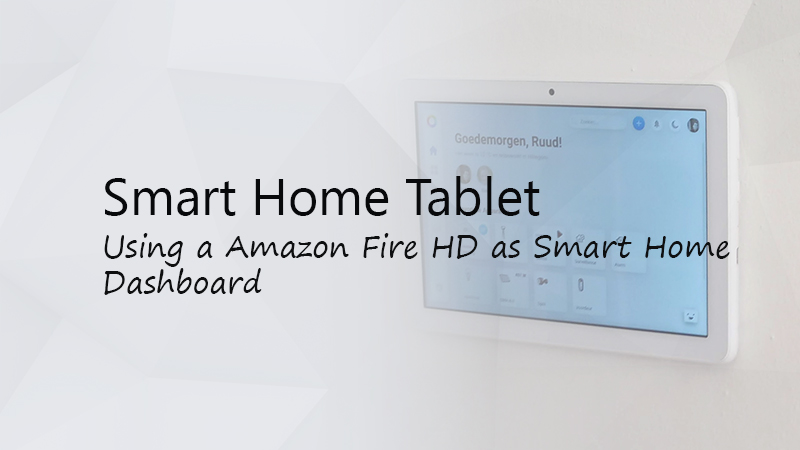The Dawn of the Truly Intelligent Home
For years, the concept of a “smart home” has been synonymous with voice-activated speakers playing music, smart plugs turning lights on and off, and thermostats that learn your schedule. While revolutionary in their time, these siloed devices represent a mere prelude to the main event. We are now standing at the precipice of a new era, one defined not by individual gadgets, but by deeply integrated, proactive, and context-aware AI home ecosystems. The latest Smart Home AI News isn’t about a single new device; it’s about the platform-centric approach major technology companies are taking to unify our living spaces. This evolution moves beyond simple automation to create environments that anticipate our needs, manage themselves efficiently, and offer a level of personalization previously confined to science fiction. At the heart of this transformation is a fusion of on-device intelligence, advanced sensor technology, and sophisticated AI that promises to redefine our relationship with the spaces we inhabit.
Deconstructing the AI Home Ecosystem
The modern AI-powered home is not a collection of independent devices but a cohesive, multi-layered system. This architecture can be broken down into three fundamental components: the central intelligence hub, the sensory perception layer, and the physical action layer. Understanding how these elements interact is key to grasping the future of domestic technology.
The Central AI Hub: Distributed Intelligence
The brain of the smart home is evolving. Initially centralized in a smart speaker or a mobile app, intelligence is now becoming more distributed. The latest AI Phone & Mobile Devices News highlights how flagship smartphones are becoming powerful on-device AI processors, acting as the primary user interface and a secure hub for personal data. This shift towards local processing, a key topic in AI Edge Devices News, means that critical computations happen on your device rather than in the cloud. This “edge computing” model significantly reduces latency, enhances privacy by keeping sensitive data within your home, and ensures core functionalities remain operational even if the internet connection drops. The hub’s role is to orchestrate the flow of information, learn user patterns, and make predictive decisions for all connected devices.
Vision and Sensory Perception: The Eyes and Ears of the Home
An intelligent system is only as good as the data it receives. This is where the sensory layer, powered by a new generation of smart sensors and cameras, comes into play. The latest AI-enabled Cameras & Vision News showcases devices that do far more than just record video. These cameras use computer vision to perform real-time object recognition, distinguishing between family members, pets, and strangers. This technology is the backbone of advanced AI Security Gadgets News, enabling features like package detection and intelligent alerts that filter out false alarms from passing cars or swaying trees. Beyond cameras, a network of AI Sensors & IoT News provides a rich stream of environmental data—monitoring temperature, humidity, air quality, motion, and even ambient light—to create a holistic, real-time digital twin of the home environment.
The Action Layer: Intelligent Appliances and Robotics
The final layer is where the AI’s decisions manifest in the physical world. This is where we see the most tangible benefits. According to recent Smart Appliances News, major brands are embedding AI directly into their products. For instance, an oven featured in AI Kitchen Gadgets News might use an internal camera to identify the food you’ve placed inside—be it a pizza or a roast chicken—and automatically select the optimal cooking program. Similarly, a smart refrigerator can track its inventory, suggest recipes based on available ingredients, and add items to your shopping list. This action layer also includes mobile agents. The latest Robotics Vacuum News points to cleaners that don’t just navigate a room but also use cameras to identify and avoid obstacles like cables or pet waste. Looking forward, AI Personal Robots News suggests a future where mobile robots can perform more complex tasks, from fetching items to providing companionship, all orchestrated by the central AI hub.

Under the Hood: The AI Technologies Powering Smart Living
The seamless experience of a modern AI home is powered by a confluence of several sophisticated technologies working in tandem. These core AI disciplines are what elevate a connected home into a truly intelligent one.
Generative AI and Natural Language Understanding
The way we interact with our homes is becoming more natural and conversational, thanks to advancements in Large Language Models (LLMs) and Generative AI. This is a central theme in AI Assistants News. Instead of issuing rigid, specific commands, users can now make contextual requests. For example, you could say to your AI Audio / Speakers News device, “It feels a bit stuffy, and I’m settling in to read a book.” An advanced AI assistant would interpret this to mean it should lower the temperature slightly, increase airflow through the HVAC system, and adjust the smart bulbs to a warm, focused reading light, a key feature in AI Lighting Gadgets News. This level of understanding, which infers intent from ambiguous language, is the key to frictionless interaction.
Computer Vision and Sensor Fusion
As mentioned, computer vision is a cornerstone technology. But its true power is unlocked through “sensor fusion”—the process of combining data from multiple, diverse sources to create a more accurate and complete picture of a situation. Your home AI might fuse data from a camera that sees you on the couch, your smartwatch from the world of Wearables News that indicates a lowered heart rate, and a microphone that detects the sound of snoring. From this, it can confidently conclude you’ve fallen asleep. This insight, a topic often covered in AI Sleep / Wellness Gadgets News, could then trigger a routine to turn off the TV and dim the lights. This multi-modal approach allows the AI to make more reliable and nuanced decisions than any single sensor could alone. The future of this field, hinted at in AI Research / Prototypes News, even includes nascent Neural Interfaces News, where brainwave data could one day become another input stream for the home AI.
On-Device vs. Cloud AI: The Privacy and Performance Trade-off
A critical architectural decision in smart home design is where the AI processing occurs. Cloud AI offers virtually limitless computational power, ideal for training complex models and handling massive datasets. However, it introduces latency and potential privacy concerns as data must be sent over the internet. In contrast, on-device processing, driven by the rise of powerful AI Edge Devices News, keeps data localized. This is crucial for privacy-sensitive applications like indoor security cameras and for functions that require instantaneous responses, such as a safety system detecting a fall. The optimal approach, which many manufacturers are now adopting, is a hybrid model. Simple, time-sensitive tasks are handled on the edge, while more complex, data-intensive operations are offloaded to the cloud, providing the best of both worlds in performance and privacy.
The AI Home in Action: From Daily Routines to Specialized Care
The true impact of these integrated systems is best understood through real-world scenarios that demonstrate how they can enhance convenience, efficiency, and well-being.
The Proactive and Personalized Environment

Imagine a home that adapts to you throughout the day. Your AI Fitness Devices News-worthy smartwatch communicates your workout completion to the home. The AI responds by slightly lowering the temperature and starting a “cool-down” playlist. Later, as you prepare dinner, your AI Kitchen Gadgets News hub displays a recipe on the smart fridge screen, preheats the oven, and adjusts the kitchen lighting. The system even integrates with your car; as your Autonomous Vehicles News-enabled vehicle approaches home, the AI triggers a “welcome home” scene—adjusting the thermostat, turning on entry lights, and disarming the security system. This level of proactive personalization extends to every corner of life, from AI Gardening / Farming Gadgets News that manage an indoor herb garden to AI Toys & Entertainment Gadgets News that create interactive play experiences for children.
Intelligent Resource Management and Sustainability
An AI home is an efficient home. By analyzing data from countless sensors, the AI can optimize resource consumption in ways a human never could. This is a major focus of AI for Energy / Utilities Gadgets News. The system learns your family’s occupancy patterns and adjusts heating and cooling on a room-by-room basis, ensuring comfort without wasting energy on empty spaces. It can monitor water usage, detect leaks early, and even coordinate with the local power grid, a concept from Smart City / Infrastructure AI Gadgets News, to run high-consumption appliances like dishwashers or EV chargers during off-peak hours when electricity is cheaper and greener. This intelligent management not only saves money but also contributes to a more sustainable lifestyle.
Enhanced Accessibility and Assisted Living
Perhaps the most profound application of the AI home is in creating safer, more independent living environments for the elderly and individuals with disabilities. This is a rapidly growing field highlighted in AI for Accessibility Devices News and Health & BioAI Gadgets News. Passive AI Monitoring Devices News can use sensors and computer vision to detect falls or unusual periods of inactivity and automatically alert emergency contacts or services. Smart medication dispensers can provide reminders and track adherence. For those with mobility challenges, voice commands can control every aspect of the environment—from opening doors and adjusting beds to operating entertainment systems. This technology empowers individuals to live with greater dignity and autonomy in their own homes for longer.
Adopting the AI-Powered Home: A Practical Guide
Transitioning to a fully integrated AI home requires a strategic approach. While the technology is more accessible than ever, navigating the landscape of devices and platforms can be daunting. Following best practices can help ensure a smooth, secure, and future-proof setup.

Best Practices for Integration
First and foremost, commit to a primary ecosystem. Whether it’s Samsung SmartThings, Amazon Alexa, Google Home, or Apple HomeKit, choosing a foundational platform helps ensure interoperability and a unified control interface. Look for devices that support open standards like Matter, which is designed to break down the walls between different brands. Prioritize privacy by selecting products that champion on-device processing and offer transparent data policies. Finally, start small. Begin with a core hub and a few key devices that solve a specific problem—like lighting or security—and expand your system over time as your needs and comfort level grow.
Common Pitfalls to Avoid
The most common mistake is creating a “Franken-home” of disparate, non-communicating gadgets. This leads to a cluttered, frustrating experience with multiple apps and no true automation. Another pitfall is ignoring security. Every connected device is a potential entry point for bad actors. As highlighted in AI Security Gadgets News, it is critical to use strong, unique passwords for every device and service, enable two-factor authentication, and keep all firmware up to date. Lastly, avoid vendor lock-in where possible. While committing to an ecosystem is wise, relying exclusively on a single brand’s proprietary hardware can be limiting and expensive in the long run. A balanced approach that leverages a core platform while incorporating best-in-class, Matter-compatible devices from various manufacturers is often the most resilient strategy.
Conclusion: The Home as a Responsive Partner
The narrative of the smart home is fundamentally changing. We are moving away from a command-and-response model and toward a collaborative partnership with our living spaces. The convergence of mobile AI, advanced sensors, and intelligent appliances is creating an environment that is not just automated, but truly ambient and aware. The benefits are clear: unparalleled convenience, greater energy efficiency, robust security, and transformative applications in accessibility and wellness. As these technologies continue to mature and integrate further—encompassing everything from AR/VR AI Gadgets News for visualizing home data to AI in Sports Gadgets News that syncs with your environment—our homes will become our most personalized and proactive partners in navigating daily life. The future is not just smart; it’s intelligent, intuitive, and deeply integrated.










